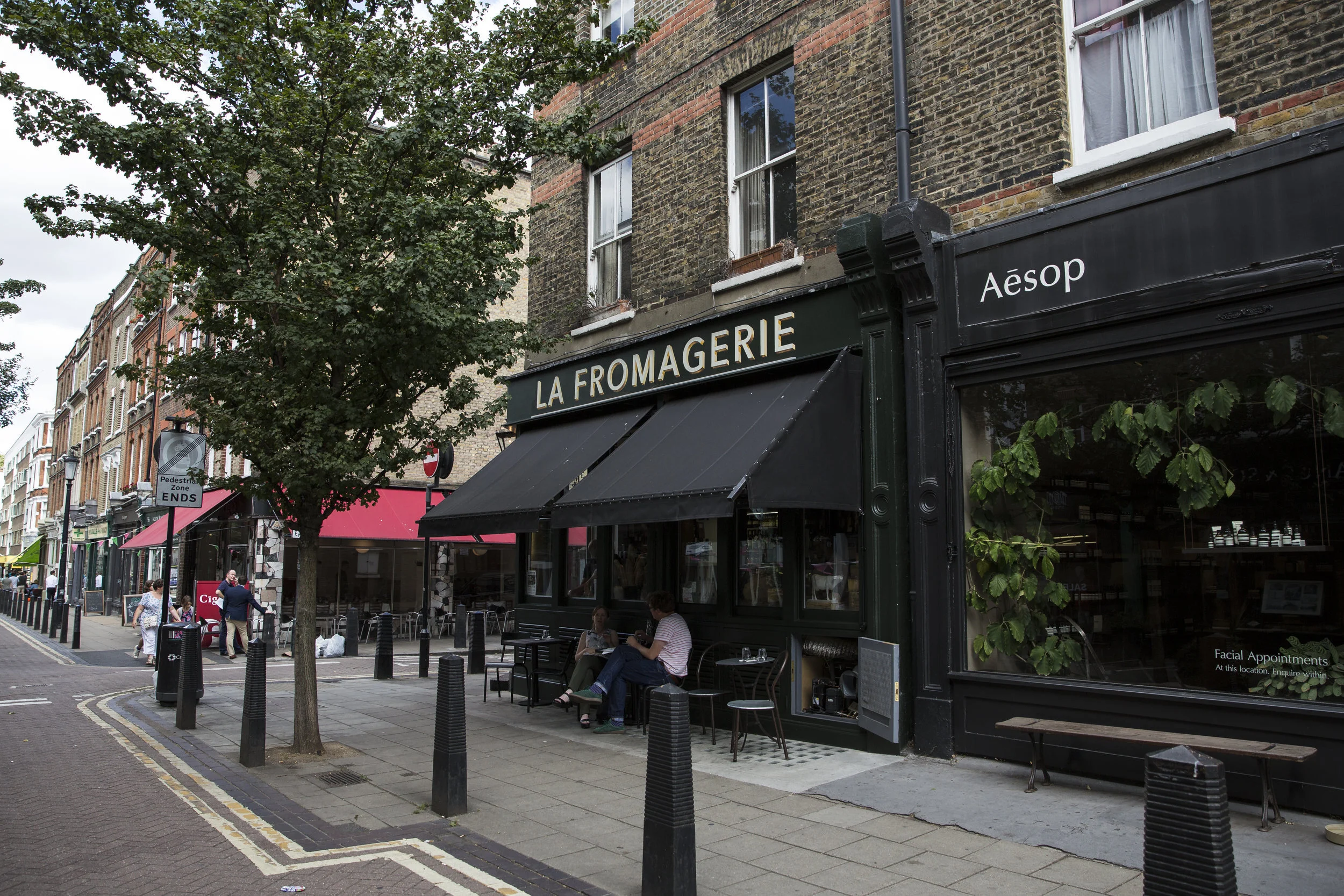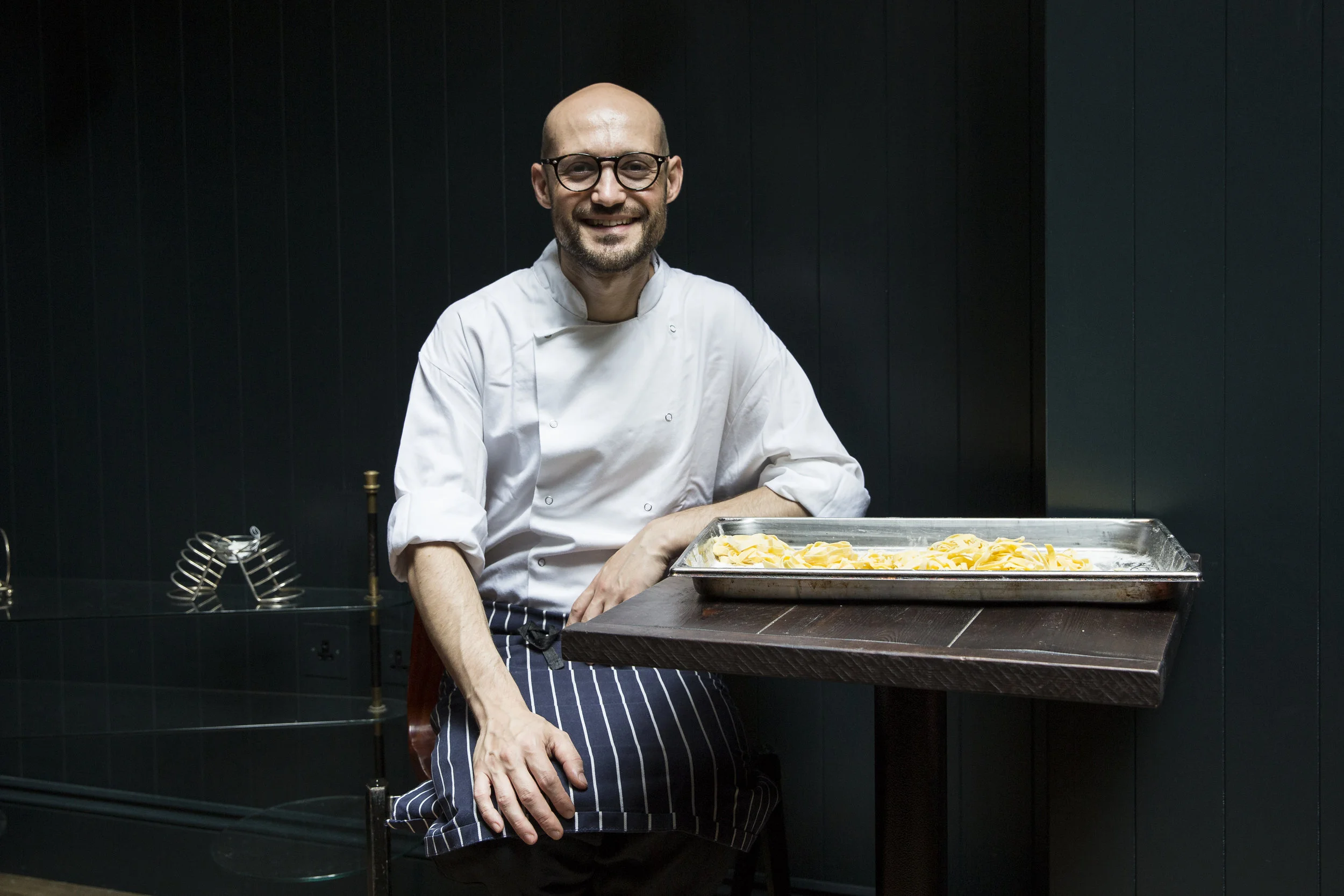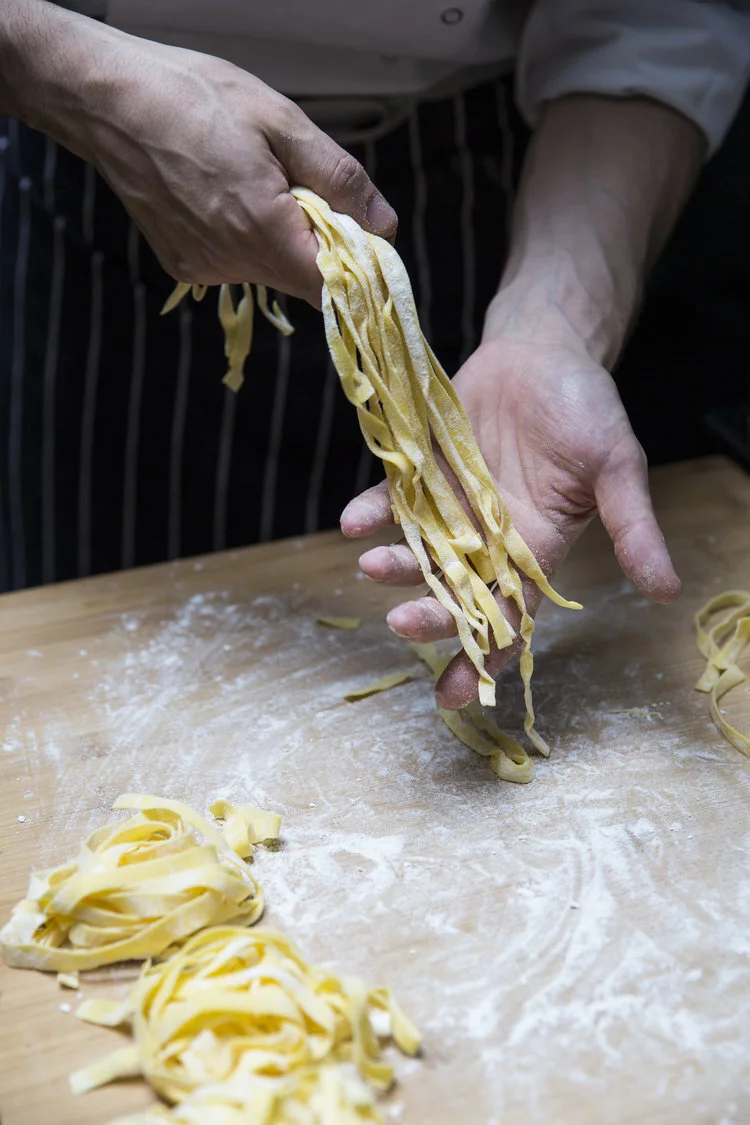An interview with Alessandro Grano of La Fromagerie
Photography by Catherine Frawley
Interview by Ariana Ruth
Recipe by Alessandro Grano
That’s why when they opened their newest location in Bloomsbury we were so excited to experience a finer dining experience this time around. The Bloomsbury location still has the tell tale farm shop in the front, but the back of the premises is dedicated to restaurant seating and a few stools around the classically Italian style bar. We were lucky enough to have photographer, Catherine Frawley meet up with Head Chef of all three la fromagerie locations, Alessandro Grano back in August where he shared some of his favourite items on the menu.
We a team of freelancers at Table. While we’d love for this magazine to be our full time job, we’re not there yet. As any freelancer can tell you, every time you come across the perfect cafe to work from you can’t help but get excited. La Fromagerie in Marylebone has always been one of those spots for us. The staff are always friendly, there’s a tangy smelly of cheese in the air, wafting over from the cheese room and their seasonal selection of food is always delicious.
What recipe or food brings you back to your childhood?
When I was young, I used to go with my grandfather to local markets in my hometown where we would buy fresh, seasonal produce. My passion for cooking began watching him, as he was the house cook. I still remember one of his specialities, 'riso, patate e cozze' which is a typical dish from my city, made by layering rice, thinly sliced potatoes, mussels and pecorino, or a rich ragout meat sauce. He would simmer the dish for hours and then serve it with orecchiette (an ear-shaped pasta from Puglia) and a good amount of grated cacioricotta (a salted dry ricotta) on top.
My aim is to always try to showcase the products by keeping the dish simple and honest.
What brought you to La Fromagerie?
I came to La Fromagerie because I was looking for a job where I could carry on my passion for cheese. I'm also lucky because we have some really lovely varieties of fruit and vegetables that change with the season, as well as a great range of larder items. In this way, I always have fresh seasonal produce at my fingertips, and when I plan a dish, I try to use the best product at the moment. My aim is to always try to showcase the products by keeping the dish simple and honest.
Name three ingredients that are always in your kitchen.
In my kitchen I always rely on a good quality extra virgin olive oil and fresh tomatoes, and then whatever else I use usually changes with the season.
With an ever changing list of ingredients explain your process when creating the menu.
At La Fromagerie after launching our weekend brunch and introducing fondue to our menu, the next project I started was to organise a range of take away dishes, so our customers could have a taste of La Fromagerie at home. We're a shop first of all, not a restaurant, and I have to be creative with the limitations of the space (our Bloomsbury kitchen is especially small), but I always like to try to come up a new way to highlight our products.
Every month you hold ingredient focused cooking classes at your Bloomsbury shop what do you hope that people walk away with?
The aim of the cooking classes are first of all to showcase some of the seasonal products you can find in the shop, but they're also a way to show our guests how to use these products. We often have customers who look at some of our ingredients, like whole artichokes, and ask questions about how to prepare them. In these classes which last about 2 1/2 hours, we go through usually five dishes - it's a chance to enjoy a good meal, but also I hope it helps people see it's really not as difficult as they might think to cook something from scratch.
Name your two favourite restaurants in London.
My favourite restaurant in london are Clove Club & Bocca di Lupo. Meeting people through food is exciting to me, so I also like to go to supper clubs where there is a fun, communal atmosphere.
With the entire Fromagerie cheese room at your disposal, what are three cheeses that you would recommend?
About cheese, I love all of them! They change a lot throughout the seasons, and in Spring my favourites are young goat cheeses, such Florentine. Every year I look forward to October when we start to get Mont d’Or back in stock, and, of course, year-round I always enjoy burrata, from my beloved Puglia.
We asked the lovely Catherine Frawley to stop by their Bloomsbury location to meet with Alessandro Grano and watch as he turns egg and flour into a delicious meal of Tagliatelle.
Fresh Tagliatelle with Girolles, Guanciale & Toasted Hazelnut
Instructions
Blend all the ingredients in a food processor, blitzing until the mix resembles a crumble. Touch the mixture to gauge the moisture – if it feels dry add another egg yolk, but take care that it does not become too wet. Remove the dough from the mixer and knead it together on a wooden surface until the dough is malleable and elastic. Form the dough into a disc and wrap tightly with cling wrap – allow it to rest in the fridge for at least 20 minutes (or for up to 1 day).
When ready to make the pasta, remove the dough from the fridge and divide it into three parts. Dust the surface and your rolling pin with cornmeal and start to roll the dough until it is the width of your finger, dusting with more cornmeal if needed to prevent it from sticking. Fold the finished dough into thirds and repeat this rolling and folding twice more as this helps improve the elasticity of the dough. Once you have done this, roll the dough gradually thinner to approximately 2.5 mm using a pasta machine, or if rolling by hand, roll until you can see the shadow of your hand from behind the dough when held against the light.
Once the sheet is ready, fold it over upon itself in a roll. Cut off the first 2 cm and discard, and then cut down the roll into strips 7/8 cm wide so that when you unfurl them, you have long ribbons of pasta. Release the tagliatelle and place it on a tray dusted with cornmeal, covered with a towel until you are ready to cook.
When you are ready to cook the pasta, bring a large pot of salted water to the boil and meanwhile, make the sauce.
Heat a saucepan with the olive oil, add the garlic clove and when it just starts to turn golden add the girolles, leaving them in the pan for a minute without moving them. After a minute or two, stir the girolles and add the shallot and the thyme. Season with salt and stir well, after few minutes adding the lemon juice and the black pepper. Remove the pan from heat and add the knob of butter. Return the pan to the stove top and stir to combine well. Then use a fork to remove the woody part of the thyme add the parsley and set the sauce aside.
By now the water should be boiling, so add the pasta and cook for 3 to 4 minutes, until al dente. Drain the pasta, reserving some of the cooking liquid.
Add the pasta to the pan with the sauce and also add a small ladle of the cooking water. Add the St. Andrea and the extra virgin olive oil and toss well to combine, adding bit more water if the sauce looks too dry.
Portion the pasta onto plates and serve with a slice of guanciale on top.
Ingredients
For the pasta dough
400 grams 00 Flour
3 to 4 egg yolks
1 egg
Pinch of salt
For the sauce
300 grams girolles, brushed clean
1 shallot, chopped
1 garlic clove, chopped
2 sprigs of thyme
juice from half a lemon
4 tablespoons of olive oil for cooking
1 knob of butter
30 grams grated St Andrea
1 tablespoon chopped parsley
2 tablespoons extra virgin olive oil to finish the sauce
4 sliced of guanciale
La Fromagerie
London, UK
lafromagerie.co.uk
Highbury
30 Highbury Park
London N5 2AA
Marylebone
2 - 6 Moxon Street
London W1U 4EW
Bloomsbury
52 Lamb's Conduit Street
London WC1N 3LL








